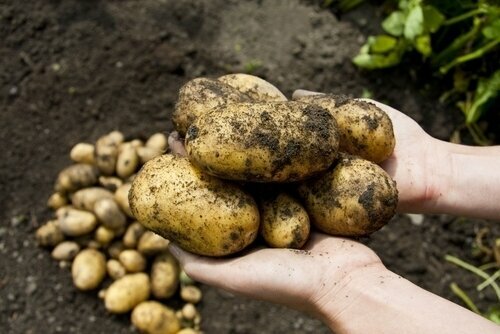
Chitting potatoes is a simple yet effective gardening technique that helps give your potato plants a head start before planting them in the ground. By allowing seed potatoes to sprout before planting, you can encourage stronger growth and an earlier harvest. This guide will walk you through the process of chitting potatoes, explaining why it’s beneficial and how to do it properly.
Why Chit Potatoes?
Chitting potatoes is especially useful in regions with short growing seasons. By pre-sprouting your potatoes, you can gain a few extra weeks of growth, leading to an earlier harvest and potentially larger yields. The process also helps to ensure that only the healthiest tubers are planted, reducing the risk of weak plants that may not produce well.
When to Start Chitting
The ideal time to start chitting potatoes is about six weeks before you plan to plant them outdoors. In most climates, potatoes are planted in early spring, around March or April, so chitting of First Earlies should begin in late January or February. However, this timing can vary depending on your local climate and the specific variety of potatoes you are growing.
How to Chit Potatoes
Chitting is a straightforward process that requires minimal supplies. Follow these steps to get started:
-
Choose Healthy Seed Potatoes Visit us to choose your certified seed potatoes. With a wide range of First Earlies, Second Earlies, and Maincrop potatoes available, you can select the perfect varieties to keep you chipping, roasting, baking, and enjoying delicious flavors throughout the harvest season.
-
Position the Potatoes Correctly Place the potatoes in a shallow tray, egg cartons, or a wooden box with the majority of the eyes (small indentations where sprouts will form) facing upwards. This orientation ensures strong, upward growth.
-
Provide Proper Conditions Store the potatoes in a cool, bright location with indirect sunlight, such as a windowsill or unheated room. The ideal temperature range is 45–50°F (7–10°C). Avoid dark or overly warm places, as these can cause weak, leggy sprouts.
-
Monitor Growth Over the next few weeks, the potatoes will develop short, sturdy green or purple sprouts. Ideally, these should be around ½ to 1 inch long before planting.
Planting Chitted Potatoes
Once the soil is workable and frost risks have passed, plant your chitted potatoes with the sprouts facing upwards. Handle them carefully to avoid breaking the delicate shoots. Cover them with soil and water them well to encourage strong establishment.
Final Thoughts
Chitting potatoes is an easy and rewarding technique that can improve your potato harvest. By giving your tubers a head start, you can enjoy healthier plants, an earlier yield, and potentially greater production. Whether you are a beginner gardener or an experienced grower, incorporating chitting into your planting routine is a great way to enhance your potato-growing success.




